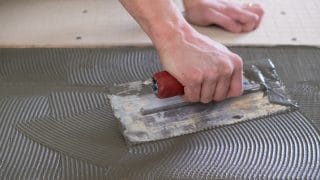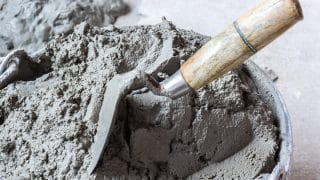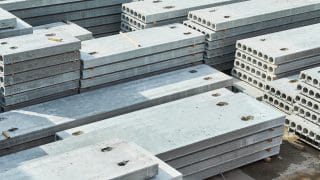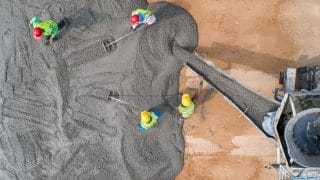What Is Sheathing? How to Use Sheathing in Construction
Nov 15, 2021
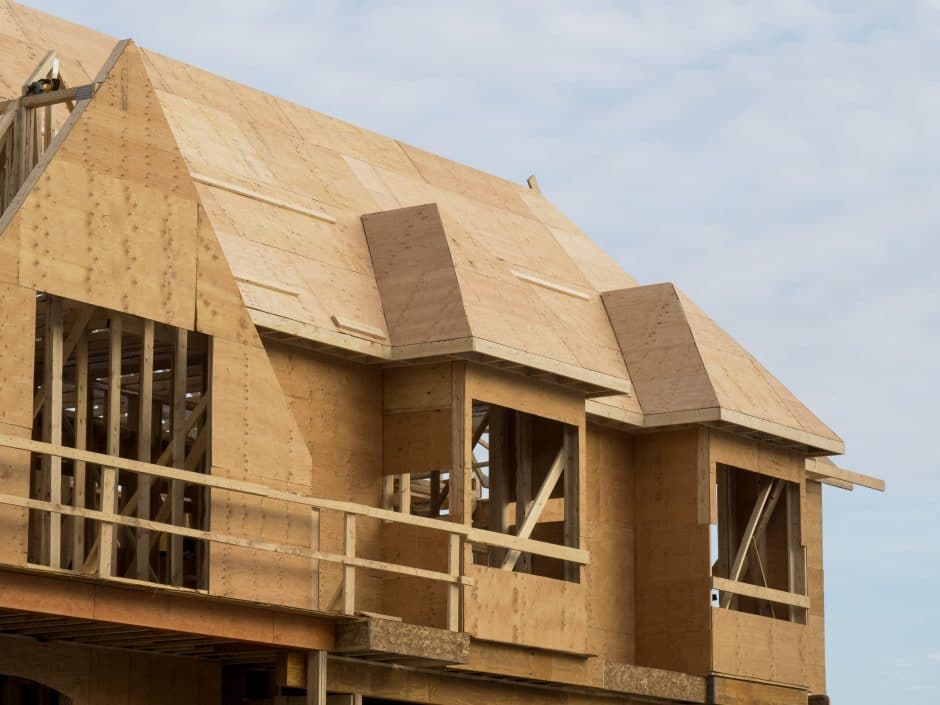
If you’ve worked on a residential or commercial building under construction, you’ve likely noticed the sheathing, which is the outer layer or casing (often made from wood) that construction crews place on the building. Sheathing protects the floor, ceiling, roof, and wall framing and covers the entire building’s framework, giving it a solid shape. This structural layer is applied before aesthetic features like roof shingles or brick veneer are installed.
What does sheathing do?
Sheathing serves several purposes: It protects against the elements, provides a foundation for materials like roofing, siding, and flooring, and fortifies the structure against internal and external forces. There are several different types of sheathing: exterior wall, floor, and roof.
Exterior wall sheathing
Exterior wall sheathing is the most common type of sheathing and has structural or nonstructural functions.
- Structural sheathing strengthens the building, providing support. It adds shear strength to the framework, meaning it helps resist frictional forces and helps prevent swaying or bending, which can occur during extreme weather or when the house’s foundation settles.
- Nonstructural sheathing provides insulation. As an added layer to the framing, it helps keep heat in and wind and water out.
Floor sheathing
Floor sheathing is typically the first sheathing installed during construction since it provides a platform for workers. It also offers substantial structural support and transfers live loads from floors and joist beams above to the ground below.
Roof sheathing
Roof sheathing provides lateral support to the roof frame. It transfers forces down the rafters and trusses and helps distribute weight evenly across the entire roof to prevent it from sagging or bowing. Roof sheathing also acts as a foundation for shingles and helps to stop leaks.
Types of sheathing materials
Sheathing is made from several different materials including wood, fiberboard, cement, gypsum, and glass mat.
Wood
Wood sheathing is used for exterior walls, floors, and roofs. Wood is the most common material for sheathing and comes in three different formulations: plywood, oriented strand board (OSB), and waferboard. Here are some other characteristics of the different types of wood sheathing:
If you’ve worked on a residential or commercial building under construction, you’ve likely noticed the sheathing, which is the outer layer or casing (often made from wood) that construction crews place on the building. Sheathing protects the floor, ceiling, roof, and wall framing and covers the entire building’s framework, giving it a solid shape. This structural layer is applied before aesthetic features like roof shingles or brick veneer are installed.
What does sheathing do?
Sheathing serves several purposes: It protects against the elements, provides a foundation for materials like roofing, siding, and flooring, and fortifies the structure against internal and external forces. There are several different types of sheathing: exterior wall, floor, and roof.
Exterior wall sheathing
Exterior wall sheathing is the most common type of sheathing and has structural or nonstructural functions.
- Structural sheathing strengthens the building, providing support. It adds shear strength to the framework, meaning it helps resist frictional forces and helps prevent swaying or bending, which can occur during extreme weather or when the house’s foundation settles.
- Nonstructural sheathing provides insulation. As an added layer to the framing, it helps keep heat in and wind and water out.
Floor sheathing
Floor sheathing is typically the first sheathing installed during construction since it provides a platform for workers. It also offers substantial structural support and transfers live loads from floors and joist beams above to the ground below.
Roof sheathing
Roof sheathing provides lateral support to the roof frame. It transfers forces down the rafters and trusses and helps distribute weight evenly across the entire roof to prevent it from sagging or bowing. Roof sheathing also acts as a foundation for shingles and helps to stop leaks.
Types of sheathing materials
Sheathing is made from several different materials including wood, fiberboard, cement, gypsum, and glass mat.
Wood
Wood sheathing is used for exterior walls, floors, and roofs. Wood is the most common material for sheathing and comes in three different formulations: plywood, oriented strand board (OSB), and waferboard. Here are some other characteristics of the different types of wood sheathing:
- Plywood sheathing is made from cross-laminated wood sheets. Plywood sheathing is durable and strong but runs the risk of developing soft spots, which can cause structural problems over time.
- Oriented strand board (OSB) is made from wood chips glued together. OSB is lightweight, flexible, and inexpensive, but tends to swell when wet, which can damage the framing. Generally, OSB is more susceptible to moisture than plywood.
- Waferboard is made from compressed pieces of wood panels. Waferboard is the least expensive wood option. Waferboard absorbs moisture faster than plywood and OSB, and is therefore best-suited to areas not heavily exposed to the elements, like floor sheathing.
Fiberboard
Fiberboard, an engineered composite board made of plant-derived cellulose fiber, can be used for exterior wall sheathing or roof sheathing. Builders install fiberboard most often over plywood or OSB sheathing for additional sound-proofing. Fireboard isn’t sturdy enough on its own to be the sole source of sheathing, but it is an affordable insulation option.
Cement board
Builders use Cement board mostly for structural exterior wall sheathing. Cement board is reinforced with a glass-fiber mesh and is an ideal foundation for brick siding or ceramic tile siding, thanks to its heavy base. Cement is non-combustible and moisture-resistant.
Gypsum
Gypsum is a popular wood alternative that builders mostly use on nonstructural exterior walls. Gypsum is especially useful because it is fire- and sound-resistant, making it an ideal material for insulation. Gypsum is affordable, durable, and lightweight, but not moisture-resistant.
Glass mat
Similar to gypsum sheathing, glass mat has a gypsum core and an outer casing made of fiberglass, as opposed to paper. This type of sheathing is ideal for resisting moisture and mold, and best used in exterior walls. Since it’s durable, affordable, and easy to install, glass mat sheathing is widely used in commercial construction.
MT Copeland offers video-based online classes that give you a foundation in construction fundamentals with real-world applications, like how house framing works. Classes include professionally produced videos taught by practicing craftspeople, and supplementary downloads like quizzes, blueprints, and other materials to help you master the skills.


